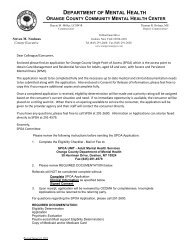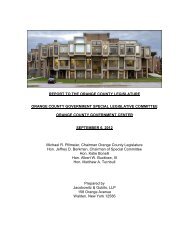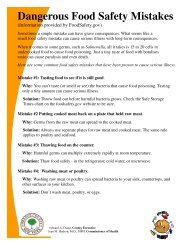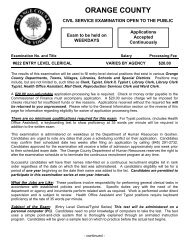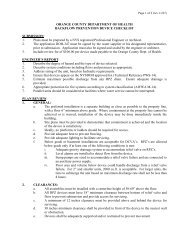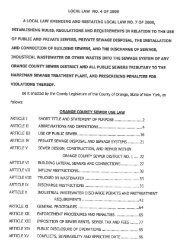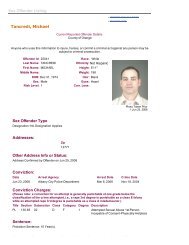A School Waste, Reduction, Reuse, Recycling, Composting & Buy ...
A School Waste, Reduction, Reuse, Recycling, Composting & Buy ...
A School Waste, Reduction, Reuse, Recycling, Composting & Buy ...
You also want an ePaper? Increase the reach of your titles
YUMPU automatically turns print PDFs into web optimized ePapers that Google loves.
Getting Started<br />
All that you will need to begin are 2 lbs. of redworms (Eisenia foeticla), most commonly<br />
referred to as "red wigglers", a plastic or wooden container approximately 2' x 2' wide and<br />
1' deep, some shredded newspaper or white office paper and a handful of topsoil or<br />
compost and you're ready. You will need to moisten the bedding with water to create the<br />
proper environment for the worms. Specially designed containers are available for<br />
purchase or you can make your own. A number of sources for commercially produced bins<br />
are listed in this handout. Two pounds of redworms can consume up to 3-5 lbs. a week of<br />
coffee grounds, egg shells, tea bogs, apple cores, stale crackers, banana peels, wilted<br />
lettuce and other vegetable scraps. Do not add any animal products, dairy items, fats or<br />
oils. These items will cause the bin to develop unpleasant odors.<br />
There are a number of inexpensive reference materials available on this topic. We strongly<br />
suggest that you purchase or borrow some of these materials from your local library<br />
before you begin. The entire setup for a classroom, including reference materials, a<br />
commercial bin and worms can cost as little as $100. If you make your own bin, it can cost<br />
considerably less. You may also want to see an active vermicomposting system before<br />
beginning your own. Local Cornell Cooperative Extension offices may know of local<br />
vermicomposting systems you can look at.<br />
Most Commonly Asked Questions About Vermicomposting<br />
Won't the bin smell bad?<br />
A well-maintained vermicompost bin should not have an unpleasant or strong smell. An<br />
"earthy" odor is typical of a healthy system. If your bin does smell, it may need to be<br />
cleaned (harvest the vermicompost and give the worms new bedding), or you may be<br />
overloading the system with too much food. This is the most common mistake in classroom<br />
bins.<br />
How often does the bin need to be cleaned?<br />
We have found through maintaining our own bin that the bin usually needs to be cleaned<br />
every four months. This will vary depending on how much food you have added, how many<br />
worms you started with, etc. If most of the bedding is no longer recognizable, then it<br />
probably needs to be changed. Do not wait too long as a dirty bin could become toxic to<br />
your worms.<br />
Won't the worms escape?<br />
If you find large numbers of worms crawling out of the bedding and up the sides of the<br />
bin, the bedding is probably too wet and the worms need oxygen. You may want to clean<br />
your bin at this point or add some dry bedding. Worms will not normally leave a well<br />
maintained bin. They have everything that they need: food, warmth, darkness and the<br />
company of other worms.<br />
- 18 -




